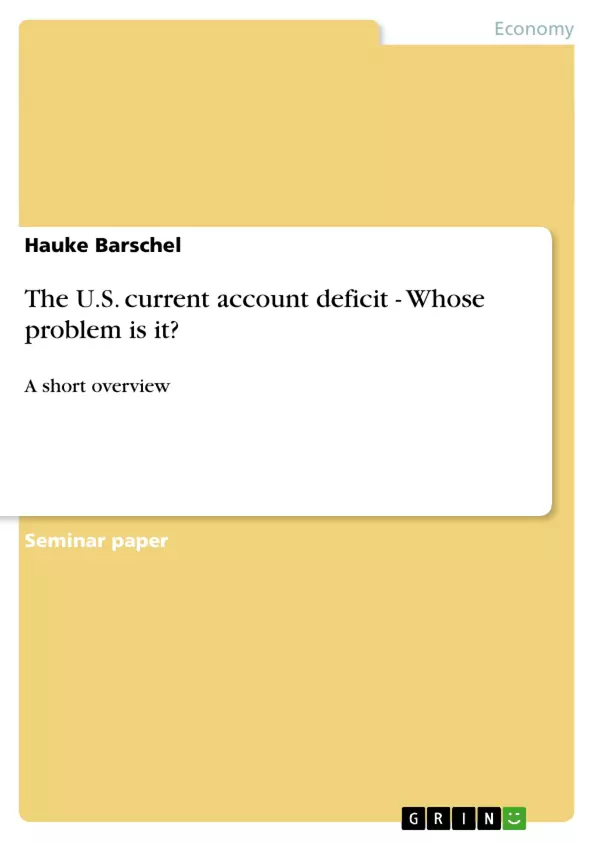Since the beginning of the 1980s in almost every year the United States (US or USA) current account has shown a deficit. After a brief overview about the components of a country’s current account this work provides an analysis of the US deficit’s effects on the US economy. Furthermore it investigates effects on economies outside the US in order to verify whose problem it is.
Inhaltsverzeichnis (Table of Contents)
- Introduction
- The nature of a country's current account
- The deficit in the United States
- A general view on capital inflows
- Effects on the US economy
- Effects on economies outside the US
- ‘Landing scenarios’
- Conclusion
Zielsetzung und Themenschwerpunkte (Objectives and Key Themes)
This work examines the US current account deficit, its causes, and its effects on both the US and other economies. It explores the relationship between the deficit and the US economy's strength, as well as the role of capital inflows and the potential for a sustainable deficit.
- Components and nature of a country's current account
- Causes and implications of the US current account deficit
- Impact of the deficit on the US economy
- Effects of the deficit on economies outside the US
- The sustainability of the US current account deficit
Zusammenfassung der Kapitel (Chapter Summaries)
- Introduction: This chapter introduces the topic of the US current account deficit and its significance in the global economy. It highlights the long-term deficit and the work's aim to analyze its impact on the US and other countries.
- The nature of a country's current account: This chapter defines the components of a country's current account, including merchandise trade, services, investment incomes, and unilateral transfers. It provides an overview of how these components contribute to the overall balance.
- The deficit in the United States: This chapter analyzes the US current account deficit, explaining its causes and potential interpretations. It examines the role of public and private savings, the relationship between the deficit and the US dollar, and the mechanism of capital inflows.
- A general view on capital inflows: This chapter explores the impact of capital inflows on the US economy, focusing on the relationship between capital mobility, marginal productivity, and GDP growth. It discusses the implications of capital inflows for the US economy's overall performance.
- Effects on the US economy: This chapter examines the effects of the US current account deficit on the US economy, particularly the ownership structure of assets and the role of foreign investment. It analyzes the impact of capital inflows on US companies and the potential for future debt obligations.
- Effects on economies outside the US: This chapter focuses on the effects of the US current account deficit on economies outside the US, particularly those that rely heavily on exports to the US market. It explores the potential for global investors to reduce their stake in the US economy and the impact of a declining demand for US dollars on exchange rates.
Schlüsselwörter (Keywords)
This study examines the US current account deficit, its causes, and its impact on domestic and international economies. Key concepts explored include capital inflows, the role of savings, the US dollar exchange rate, and the sustainability of the deficit.
- Quote paper
- Hauke Barschel (Author), 2004, The U.S. current account deficit - Whose problem is it?, Munich, GRIN Verlag, https://www.grin.com/document/28003



